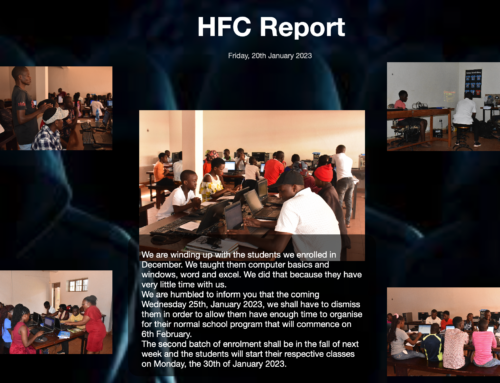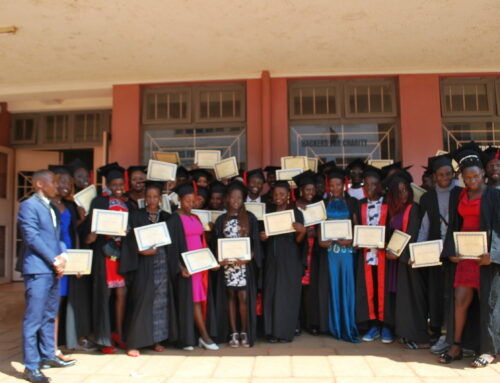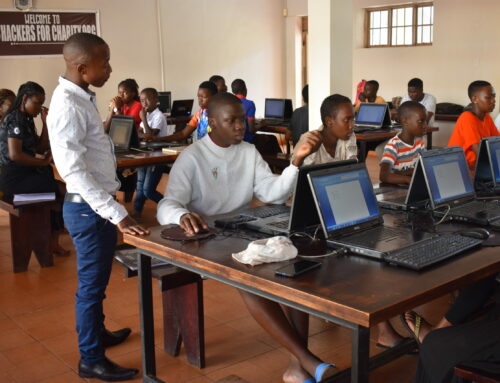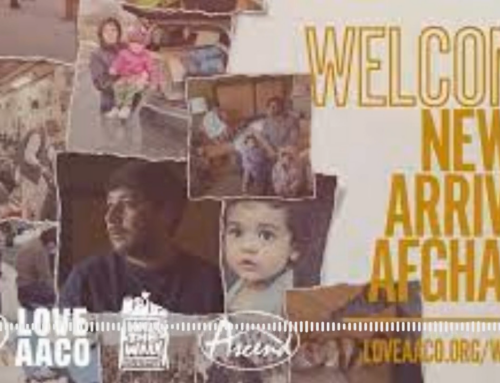Many loyal followers will know that we’ve been interested in education for a long time and gadgets for even longer. So when Sam came up with the RuggedPi (previously PelicanPi) he started us on quite an incredible journey. Over time, we had ideas of productizing the RuggedPi, but for whatever reason, we kept getting one door slammed in our face after another. We started working with OpenWRT platforms as a more readily-available and sustainable alternative, but that platform had it’s limitations. When I heard about this thing called the BRCK, my first impression was that it was exactly what we needed in a rugged, resilient and relevant platform for education and so many other things. I knew I had to reach out to the BRCK team to see if we could work together.
As it turned out, we had some things in common. Erik was an RVA grad (my kids school) and most of the board were MK’s. A friend had introduced me to Erik through email years ago, but I’m wary of those introductions if I don’t immediately see a connection. I hate just dropping in on people because a friend of a friend said I should.
I drafted quite a long email to Erik (using that intro email) and explained that I was super-excited about the BRCK, that we had been playing with something similar for years and spilled my vision of a battery-powered, rugged, resilient and relevant stand-alone platform for underprivileged areas.
It took a while to hear back from the team and I wondered if my excitement had put them off. Looking back, I did come across like a nutso fanboy. As it turned out they were just slammed. We finally connected and the team graciously invited me to Nairobi for a visit. Since Nairobi is only an hour from our kids school, we coordinated it with a visit to RVA to see our kids.
I saw the sign for iHub, and knew I had found the place. Admittedly, I knew nothing about this “iHub thing” but that’s the sign I was told to look for.
The building was quite impressive. It looked like something from the ‘Merca. It even had working elevators. Woah. I wandered around inside the building and followed signs for BRCK. I found a really nice office, and told them I was looking for Erik. They knew who he was but told me to look on the top floor. Interesting. It seems they have more than one office, and this office was really slick.
I eventually met Erik in the hallway. I had seen pictures of him, but in real life, he’s intimidating. He’s easily a head taller than me and massive. 100% Viking. I thrust my hand out, half expecting him to produce a battle axe and lob it off. He didn’t. He smiled and shook my hand and from that moment on I had to constantly wrap my brain around the fact that this was the most amiable, likable and humble Viking I had even met. Needless to say, I liked him immediately.
He took me upstairs and brought me into the BRCK lab. He introduced me to Phil (who I also liked immediately) and in the midst of this introduction I saw it..
It was much smaller than I thought it would be. Size wasn’t really an issue, but I was pleasantly surprised to find out it was so small. I dove in and started telling the guys all about our journey. I started with Sam’s RuggedPi. Erik’s eyes lit up and he said something like, “Woah. Let me see that!” Phil laughed, opened a nearby drawer and produced an exact duplicate of our Pelican case. It was a mess and had wires all over, but Phil explained that it was one of their early prototypes. I was amazed. Sam’s construction was so much neater and slicker than their early prototype, but we were on the same exact page. Phil fired off one technical question after another. I was in heaven.
Then I showed them the LibraryBox. Phil laughed, opened another drawer and produced a handful of TP-Link routers. More BRCK prototypes. I was absolutely astounded. We had been having the same ideas for quite a while. It was then that I had a really crazy thought: The BRCK could be the very reason why we ran into so many slammed doors. If Sam and I had continued down our path, we likely could have had a product similar to the BRCK on kickstarter in the next two years. But we would have been too late and we would have wasted a lot of time and money. I realized that we were meant, in some crazy way, to work with these guys.
I shared our vision of using the BRCK in unique ways and the guys were thrilled. They hadn’t thought of using the BRCK this way. A reporter was there so Erik gave Phil and I the pitch, which was funny because, well, Phil totally knows the pitch. It was good for me to hear it from Erik though.
After we geeked out for a while, Erik and Phil took me on a tour. We first met Juliana Rotich who I recognized from her Ted talk. She was smart.. and funny. I liked her, too.
The tour continued and as it turns out, iHub was renting out half the building. I didn’t know anything about iHub or Ushahidi. Erik was telling me a bit about things, but when we reached the “iHub Space” (an “Internet Cafe/collaboration space for lack of a better term) I stopped dead in my tracks. Here’s the photo from Wikipedia:

iHub Space
The space was gorgeous. It was bright, open and modern.
And I was stunned to find..
I even loved the stairwells in this place..
As Erik and Phil told me more about iHub, I realized I was seeing something quite special. In short, people meet through the Internet Cafe, get ideas about projects them move to the lab to work on them, then move downstairs to rent office space and a board room to attract VC, then start their own companies. WOW.
Downstairs, they showed me the lab (gook heaven!) and the office space that memboers could rent to incubate their companies. In the middle of this gorgeous, modern space, I saw what looked like a mobile phone shop.
It turns out, it’s not a shop. These phones are donated by the manufacturers for testing. App developers can come in here and test their apps on the actual phones. Wow.
The guys took me to lunch at Pete’s, a restaurant inside the building. I had two tacos. Actual, real, no joke tacos that were amazing. (We can’t get this stuff in Uganda).
[mushy_introspection]
While my head was spinning with the possibilities (of iHub, not the tacos), I was also a bit sad. I’ve spent the past five years of my life working on the “bottom rung of technology” after jumping off the corporate ladder. I’m proud of the work we’ve done. We have trained thousands of people in our Computer Training Center, and we’ve seen hundreds of people improve their quality of life as a result of our training and certification.
But these past five years, something has gnawed at me, an itch to do something .. big. This might be residue from my life in the hacker community, out on the bleeding edge, where big things just happen, borne out of the intensity, innovation, collaboration that’s intrinsic in the community.
The visit to iHub caused some pretty deep introspection in me. I had witnessed something pretty big, something well-thought-out, well-executed and flourishing.. in Africa. It WAS possible after all.
I immediately wondered if something like that was possible in Uganda and my knee-jerk reaction was a resounding, “No. Not yet.”
In my opinion Uganda is simply not ready for something like this.
First, the corruption is so deeply embedded that large-scale not-for-profit projects are next to impossible.
Second, it’s hard to find people that are honest and hard working, people that have a vision for the future and want to collaborate and work towards it in a place like iHub. Too many people here seem wrapped up in “survival mode” wondering what they can get right here, right now and can’t even conceive of a future. This is a testament to how difficult it can be to live in “survival” mode. In my circles, I can scarcely find a single person that has vision beyond next week. It takes vision and hard work to thrive at a place like iHub.
Third, the Ugandan education system is at least a generation behind Kenya’s. The current Ugandan system has created graduates that can recite and memorize, but really struggle to think for themselves, the cliche-yet-invaluable ability to “think outside the box”.
Perhaps this is an indication that we’re on exactly the right track, working alongside educators to ensure that this changes. Or perhaps it’s a sign that I’m in the wrong place, that Nairobi is calling.
Part of me wants to stay here, slog through and make a difference here and part of me is drawn to iHub, itching to get back on that ladder and work with Erik and Phil and their brilliant team. Yeah, that ladder. The same one I jumped off of to come here.
I don’t know what this all meant but I can say that I’ve been thinking about Erik, Phil and the team ever since. I’m thrilled to be working with them on the BRCK, but I can’t help but think there might be something bigger in the future, either there or here. I just don’t know what. But I’m thankful to have had the opportunity to hang out with these guys for a while.
[/mushy_introspection]
Here’s some info about iHub from Wikipedia. Well worth the read.
The iHub is an Innovation hub and hacker space for the technology community in Nairobi that was started in March 2010 by Erik Hersman a renowned blogger, TED fellow and entrepreneur. This coworking space is a nexus for technologists, investors, young entrepreneurs, designers, researchers and programmers.[1]
Situated on the fourth floor of the Bishop Magua Centre on Ngong Road, the iHub provides a space where young entrepreneurial members can receive mentorship, Internet connectivity and the possibility of venture funding through connections with the international venture capital community. The iHub has been called the “unofficial headquarters of Kenya’s tech movement[2]”
The iHub has a number of initiatives designed to build an ecosystem around the Kenyan tech entrepreneur: iHub Research, iHub Consulting, iHub Supercomputing Cluster, and the iHub User Experience (UX) Lab. The iHub prides itself with creating a place where seeds are planted and are easily found by the people with money to help them grow, describing it as a paradigm shift towards the areas where technology approaches a barrier, and new technologies emerge to cross it. This is achieved through the idea of Open Innovation, which is the process of combining internal and external ideas as well as internal and external paths to market to advance the development of new technologies.
The space is a tech community facility with a focus on young entrepreneurs, web and mobile phone programmers, designers and researchers. It is part open community workspace (co-working), part vector for investors and VCs and part incubator.
The space was made possible by funding from Omidyar Network and Hivos. The lease is covered by Ushahidi and the 20mb internet connectivity is covered by Zuku.[3] Wazi WIFI has also installed free WIFI. Current partners include Intel and Microsoft.
















